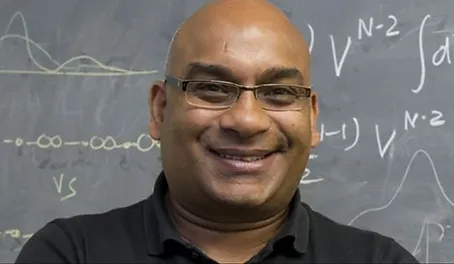
Sunil Saxena
Professor of Chemistry at the University of Pittsburgh
B.Sc. (Hons) in Chemistry: St. Stephen’s College, University of Delhi, India
M.Sc. in Chemistry: Indian Institute of Technology, Kanpur, India
Ph.D. in Chemistry: Cornell University, Ithaca, NY, 1997 (Advisor: Jack H. Freed)
Postdoctoral Scholar, California Institute of Technology, Pasadena, CA (Advisor: Julia A. Kornfield)
Postdoctoral Fellow, 1999-2001, University of California, Berkeley, CA (Advisor: Alexander Pines)
sksaxena@pitt.edu | Phone: 412-624-8680 | Office: CSC 711

Professor of Chemistry at the University of Pittsburgh
B.Sc. (Hons) in Chemistry: St. Stephen’s College, University of Delhi, India
M.Sc. in Chemistry: Indian Institute of Technology, Kanpur, India
Ph.D. in Chemistry: Cornell University, Ithaca, NY, 1997 (Advisor: Jack H. Freed)
Postdoctoral Scholar, California Institute of Technology, Pasadena, CA (Advisor: Julia A. Kornfield)
Postdoctoral Fellow, 1999-2001, University of California, Berkeley, CA (Advisor: Alexander Pines)
sksaxena@pitt.edu | Phone: 412-624-8680 | Office: CSC 711
Sunil Saxena obtained a B.Sc. (Hons) and a M.Sc. in Chemistry from St. Stephen’s College, and the Indian Institute of Technology at Kanpur, respectively. Thereafter he started his graduate work at Cornell University where he developed 2D ESR and pulsed dipolar spectroscopy. His graduate work foreshadowed the rapid development of distance methodology which has had far reaching applications in biophysics. He received his Ph.D. in Chemistry from Cornell University in 1997. Thereafter he performed postdoctoral research at Caltech and at UC Berkeley, where he worked on SS NMR and optical pumping and SQUID detected ultra-low field NMR and MRI technology, respectively. He started his independent career at University of Pittsburgh in 2001, where he rose through the ranks and is currently a Professor of Chemistry. He served as Chair of Chemistry from 2017-2023.
At Pitt, his research interests focus on the development of ESR spectroscopy and its applications to biophysics, including protein-DNA interactions and metals in biology. In earlier work his group developed the conceptual basis for pulsed dipolar spectroscopy for Cu(II) ions and the biophysical research exploited this technology to understand the role of Cu(II) ions in the mediation of protein-DNA interactions as well as aggregation in amyloids. In recent years, his group has developed site-directed Cu(II) labeling of proteins and nucleic acids and established the enhanced fidelity of these labels to measure biomolecular structure, dynamics, and function. He is a recipient of the NSF CAREER Award, the Tina and David Bellet Teaching Excellence Award at Pitt, the Provost’s Award for Excellence in Graduate Mentoring, and the Crano Memorial Award and Lecture from the Akron section of American Chemical Society. He is also an Associate Editor of Applied Magnetic Resonance, and on the Editorial Advisory Board of Analysis and Sensing.